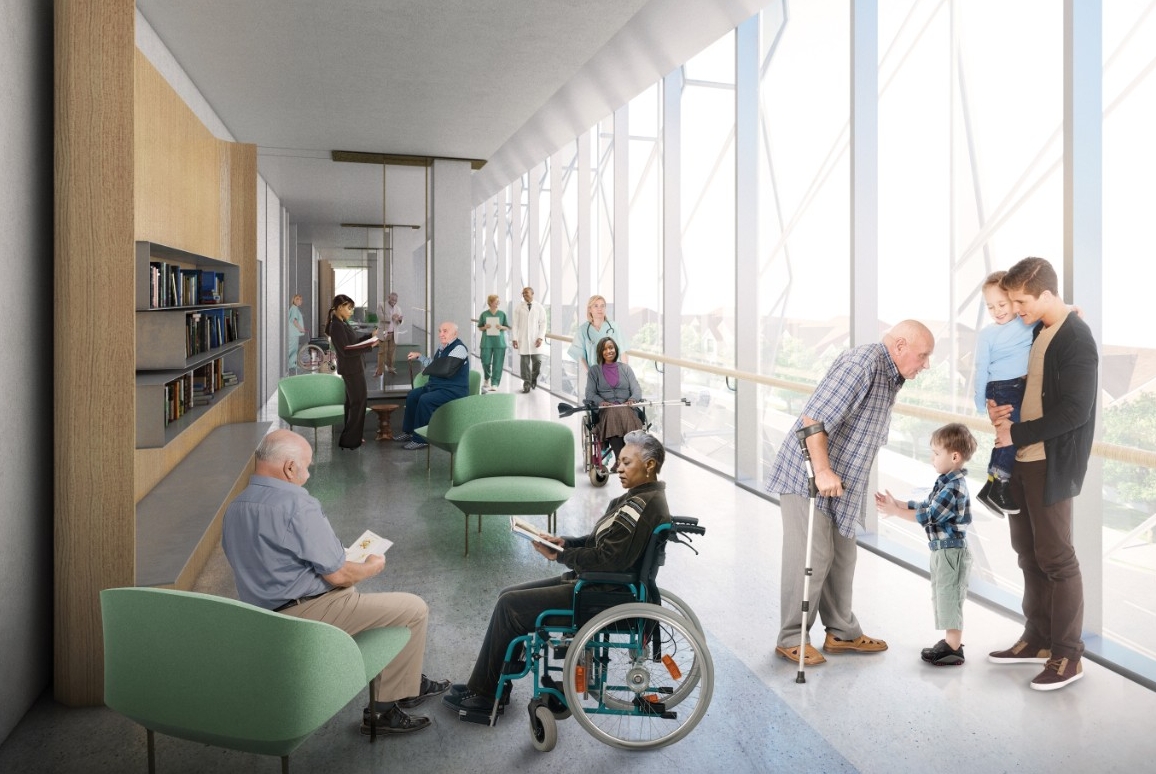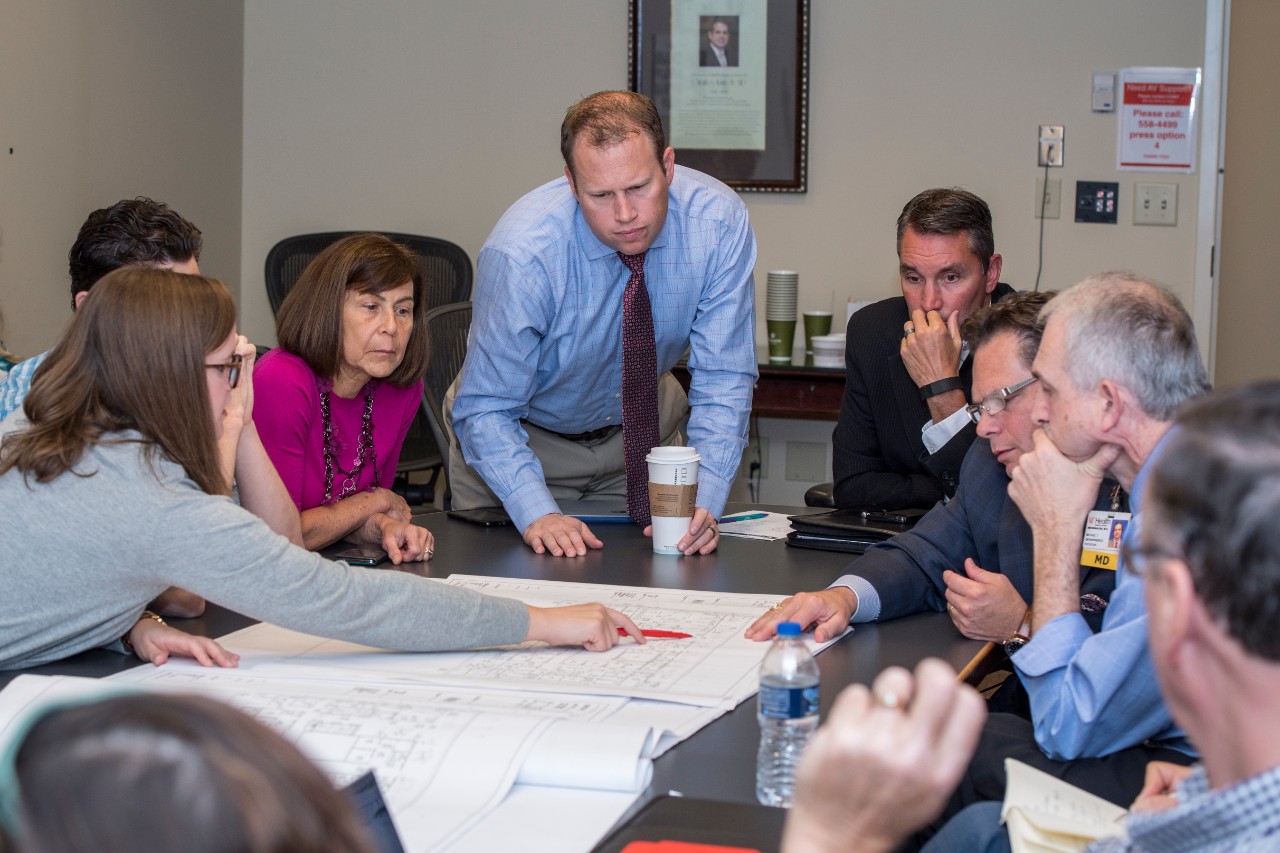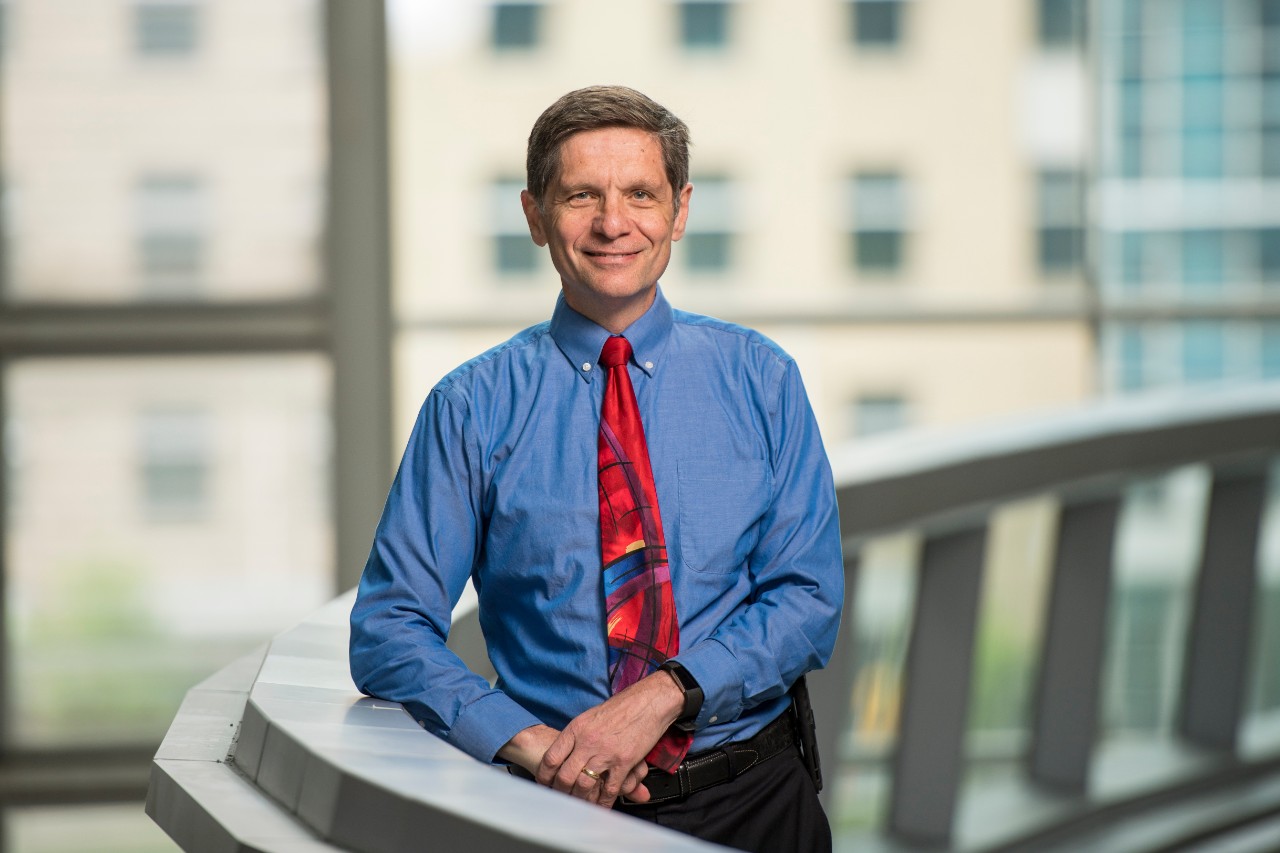Going beyond just patient-centered, the new UC Gardner Neuroscience Institute building is sensitive to the needs of those who need it the most
ransformative, comforting and
patient-sensitive.
When it opens in April, the UC
Gardner Neuroscience Institute will
serve as a much-needed central hub of neurological care, expertise and research for the
region, and all under the same roof.
But it’s bigger than that.
It’s more personal than that. For Dr. Joseph Broderick, a new home for neuroscience at UC Health represents hope. Hope for patients to come and a commitment to people neurological diseases have claimed. A year ago, Broderick, director of the institute, signed the final steel beam of the building. Before it was raised into place, he wrote, “For Phyllis,” his mother-in-law, who died of Alzheimer’s.
When the doors open, patients will find that the $68 million facility — a 114,000 square foot addition at the corner of Martin Luther King Drive and Eden Avenue — is one that’s been designed and customized specifically with them in mind.
Before a single shovel of dirt was turned, planners turned to patients and others to ask hard questions: What type of facility will best serve people who are recovering from a stroke, a traumatic brain injury or fighting a brain tumor? How can design meet the needs of those managing life with Alzheimer’s disease, epilepsy, Parkinson’s disease or other neurological diseases?

An architectural rendering shows the patient lounge area, which will include a library of resources for patients to learn more about neurological conditions.
From the small touches to the big ones, their answers were incorporated into the facility in the form of glass, concrete and steel. To truly build a home for all of neurological outpatient care, Broderick and others wanted to ensure it was a place of belonging, of comfort for patients and their caregivers. “We’ve relied heavily on our patients to assist in the design of this building,” says Broderick. “It is for them and truly is created by them.”
UC Health hired global architecture and design firm Perkins+Will to oversee the planning and design of the facility. They sought input from doctors, staff and students, and worked with an advisory committee made up of current patients and caregivers, to address every step in the patient’s journey — from the parking garage to the exam room.
“The patient advisory group was really informative for us,” says Clark Miller, managing principal of Perkins+Will. “For instance, we heard them describe the challenges of navigating sloped, tight parking garages, so we designed a flat-leveled garage with entrances and exits from the elevators right to the patient floors, and adjusted the distance between parking spaces to accommodate wheelchairs, as well as stretchers.”
Throughout the two-year design/build process, plywood models were built, mock patient rooms were staged, textiles samples and finishes passed around, all based on feedback from the patient advisory group, and reviewed by clinicians and staff

Planners review blueprints with UC Health Physicians and members of the building’s advisory committee, which included patients and caregivers.
“It was clear, they didn’t want a soaring atrium that you might associate with a newly designed building,” says Jason Bruns, clinical operations director for the institute. “Reflections, bold patterns and noise are all things that can really challenge someone with balance, sensory or motor issues associated with some neurological disorders, so we wanted to be cognizant that the design is accommodating to those patients. We want it to be a place where they and their families feel comfortable.”
Andrew Arken, a member of the patient advisory group, enjoyed having a hand in the design outcome. “It’s really great working with these people ... . They are just passionate about making a difference and helping make the quality of health care better. There was a lot of attention being given to the furniture, in terms of the functionality, you know, ‘How do I get out of this chair, do I have something to lean on?’ Or if I need to lean on a table, is it going to be sturdy?”

In the late ’80s, UC’s Dr. Joseph Broderick, a professor of neurology at the College of Medicine, helped lead the world’s first trial of the clot-busting drug called tissue plasminogen activator or tPA, the first FDA-approved treatment for opening clogged arteries in stroke patients. Today, he is director of the UC Gardner Neuroscience Institute, which will open in its new location in April 2019.
Previously, patients would visit a separate location for rehabilitation and physical therapy. Now, the first floor of the new building has space for therapy and exercise equipment, as well as a fully simulated apartment for patients to do occupational therapy. Design also focused on ease of patient flow. Exams rooms were made larger, so that the patient, family, provider and additional clinical experts can all be in the room comfortably, discussing the patient’s care.
Until now, the UC Gardner Neuroscience Institute had been distributed across multiple locations. It comprises more than 125 physicians who work in 15 different specialty areas and see 56,000 patients a year.
“It’s something we had been dreaming, discussing and planning for six years,” says Broderick, who has been a neurologist with UC since 1987 and is an internationally recognized expert on the treatment and underlying causes of stroke. “While it will be a patient-centered facility, it will also serve as a professional home where our clinicians, support staff, therapists and researchers can all be at their best.”
VISIONARY COMMUNITY SUPPORT
Since 2016, the Neuroscience Institute has been named in honor of the James J. and Joan A. Gardner Family Foundation, recognizing the Gardner family’s leading support of its mission of research, patient care and education.
In 2014, the Gardner Foundation pledged $14 million to fund the new facility and has remained key partners throughout its design and construction.That foundation and a broad network of community supporters have contributed more than $47 million to the project. The private campaign for the facility supports not only the building, but allows for expanded research, recruitment and community engagement efforts around neurologic disease.
As a new fixture along the Uptown innovation corridor, the Uptown Consortium has also played a key role in the facility, by contributing nearly half of a total $41 million in New Markets Tax Credits, to leverage the philanthropic support and UC Health investment in the construction project. Approximately 25 percent of the $41 million will directly impact the UC Gardner Neuroscience Institute building’s construction.

FEATURE STORIES
Home to a new hub that fast-tracks marketplace breakthrough ideas and stokes creativity in teaching and basic research, the University of Cincinnati is proving that innovation is a mindset, not a major
As UC’s Gen-1 program celebrates its 10th anniversary, students, alumni and staff reflect on the impact and success of the first-of-its-kind initiative
The new UC Gardner Neuroscience Institute building is sensitive to the needs of patients who helped inform its design.
The world premiere opera “Blind Injustice” will explore the true stories of six people who were tried, convicted and imprisoned, but then ultimately freed by UC’s Ohio Innocence Project








